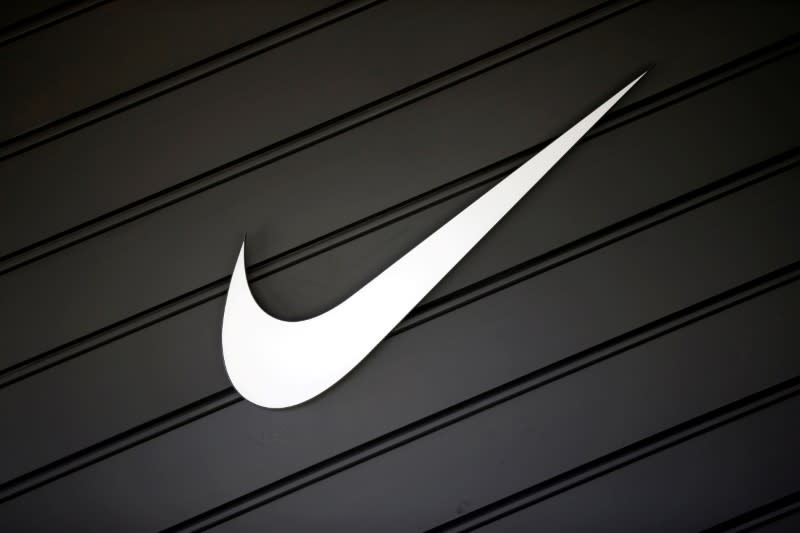What Nike is doing that's bad news for traditional retailers

The core strategy behind the future of sportswear powerhouse Nike (NKE) poses a major threat to department stores and shoe retailers.
In the company’s first quarter report on Tuesday, CEO Mark Parker emphasized the company’s primary focus going forward: Direct interaction with the consumer. And that means increased efforts to bypass traditional retailers from Macy’s (M) to Dick’s Sporting Goods (DKS) to Foot Locker (FL).
“We’ve aligned into a new formation, the consumer direct offense, to focus on reinventing our business and the industry,” Parker said on the company’s earnings conference call. “With the new consumer direct offense we are taking that consumer connection one step further. We are going deeper. We are connecting more personally to help each individual make the right choices for them.”
Nike has said it plans to grow its e-commerce business from $1 billion in 2015 to $7 billion in 2020, three times the expected growth rate of the e-commerce industry. This is part of its broader effort to boost its direct-to-consumer (DTC) sales in that period from $6.6 billion to $16 billion.
Nike’s DTC push comes at the expense of wholesale growth (to department stores), which is a shrinking source of revenue as seen in the UBS chart below.

This is a core focus in the US, where the company emphasized the dire need to shift its strategy.
“Several quarters ago, we said that the US retail landscape was not in a steady state but rather would continue to be disrupted by the accelerating consumer shift to digital and more personal brand experiences. We anticipated these shifts, and that served as the foundation for our 2X Direct strategy,” according to CFO Andrew Campion. “Over the past 90 days it has become increasingly evident to all that the North America marketplace is undergoing significant transformation.”
Nike has emphasized its digital business (up 19% year-over-year in the latest quarter) and branded stores to increase customer interaction. One pilot this quarter included a “Live Design Experience” at the “Nike By You Studio” in New York, engaging the consumer to generate custom colors and graphics along with building a shoe on-site ready to take home within an hour.
“We are breaking old models and we are fully realigning our teams to be more personal,” Parker said.
The company also sees a huge DTC opportunity in international markets and in particular developing markets. These markets account for 55% of company sales. In developing markets like China, the company can jump right into the use of mobile, Parker explained.
“With an economy that’s being driven by digital natives, they have bypassed old models, naturally blending digital and physical retail and shopping within their social channels,” Parker said.
In fact, 90% of Nike’s business in China is already transacted through Nike-branded experiences (digital and physical).
In the end, Nike may just need department stores a lot less.
“Nike has the firepower and will to generate enough interest outside of traditional channels,” UBS’ Michael Binetti said.
Department store challenge
Nike’s efforts fit into a larger push for individual brands pushing for more direct-to-consumer sales via their own websites and own stores.
“We’re seeing that manufacturers are trying to protect their brands,” according to Dennis Cantalupo, Chief Operating Officer at Creditntell, a retailing consulting firm. “This is putting more pressure on department stores, including their growing online businesses.”
Vendors from Michael Kors (KORS) and Coach (COH) to Ralph Lauren (RL) and Nike (NKE) have been pushing for more direct-to-consumer sales, a move that directly undermines the best efforts of retailers like Macy’s and Nordstrom (JWN).
Michael Kors (KORS) announced in August 2016 that it would reduce inventory in department stores and demand to be excluded from storewide promotions and coupons. Coach (COH) also announced last year that it would pull its products from more than 250 department stores, which reduces its presence by 25%. Ralph Lauren (RL) announced this summer that it plans to reduce wholesale distribution.
Ultimately, the department stores are being left in a difficult spot, squeezed by the rising power from the vendors they carry on the one hand and the online prowess of Amazon (where Nike has just inked a partnership) on the other. Whether or not they can remain “destinations” in person and online in the coming years will be paramount to their long-term sustainability.
Nicole Sinclair is markets correspondent at Yahoo Finance
Please also see:
Analyst makes case for 14% stock market sell-off in 2019
Amazon just made a major push into restaurant delivery
Fed balance sheet reduction won’t hurt the economy
Smartphone accessory maker: ‘You almost can’t believe these numbers’

 Yahoo Finance
Yahoo Finance 
